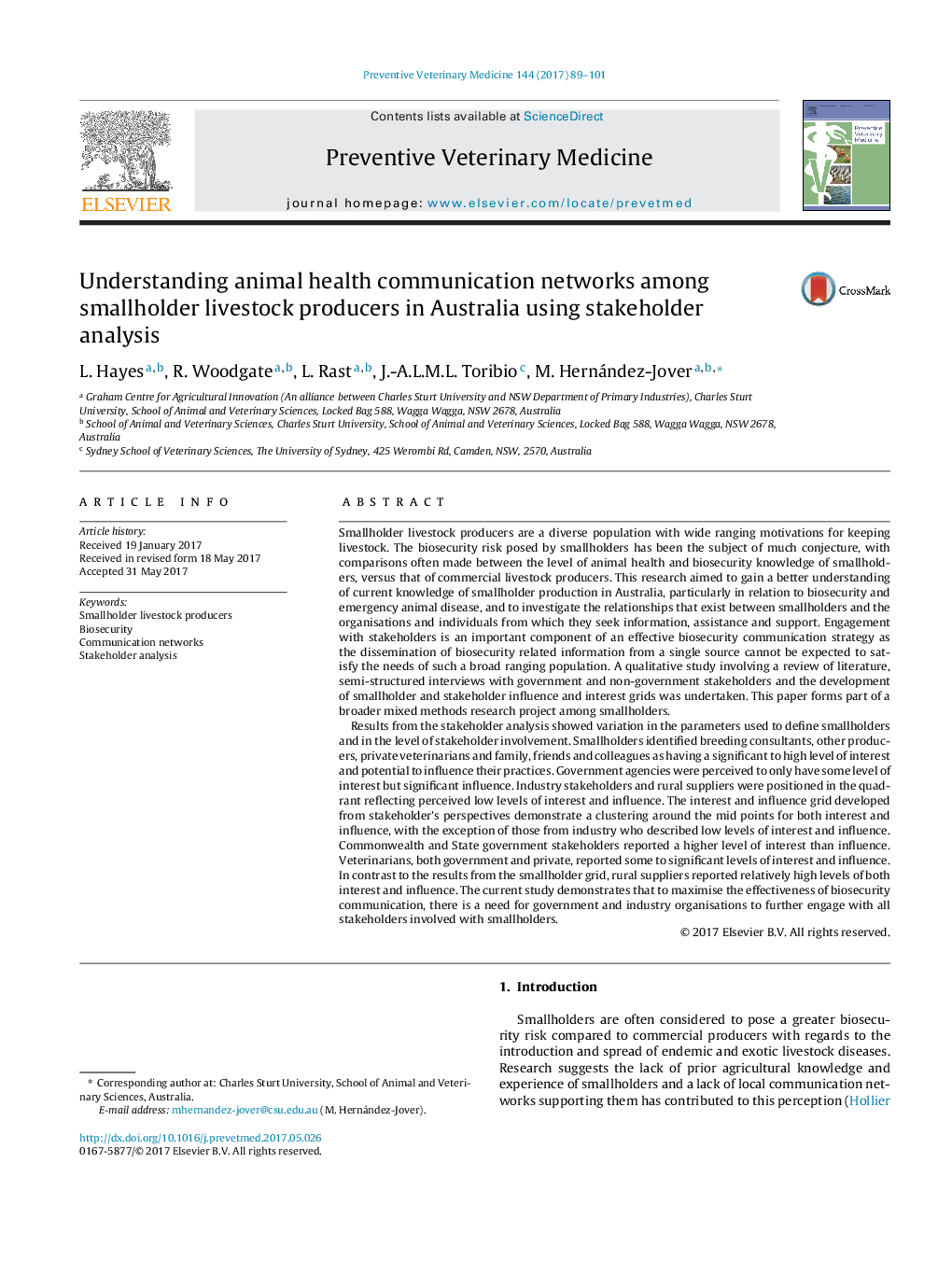| Article ID | Journal | Published Year | Pages | File Type |
|---|---|---|---|---|
| 5543713 | Preventive Veterinary Medicine | 2017 | 13 Pages |
Abstract
Results from the stakeholder analysis showed variation in the parameters used to define smallholders and in the level of stakeholder involvement. Smallholders identified breeding consultants, other producers, private veterinarians and family, friends and colleagues as having a significant to high level of interest and potential to influence their practices. Government agencies were perceived to only have some level of interest but significant influence. Industry stakeholders and rural suppliers were positioned in the quadrant reflecting perceived low levels of interest and influence. The interest and influence grid developed from stakeholder's perspectives demonstrate a clustering around the mid points for both interest and influence, with the exception of those from industry who described low levels of interest and influence. Commonwealth and State government stakeholders reported a higher level of interest than influence. Veterinarians, both government and private, reported some to significant levels of interest and influence. In contrast to the results from the smallholder grid, rural suppliers reported relatively high levels of both interest and influence. The current study demonstrates that to maximise the effectiveness of biosecurity communication, there is a need for government and industry organisations to further engage with all stakeholders involved with smallholders.
Related Topics
Life Sciences
Agricultural and Biological Sciences
Animal Science and Zoology
Authors
L. Hayes, R. Woodgate, L. Rast, J.-A.L.M.L. Toribio, M. Hernández-Jover,
